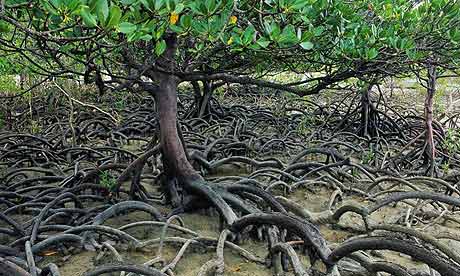MOSCOW, Indiana (AP) -- Thunderstorms in the Midwest led to a drowning in West Virginia and battered parts of Indiana with tornadoes, one of which damaged several homes, authorities said Wednesday.

A tornado damaged homes and downed trees and power lines in the Indiana community of Moscow late Tuesday.
One person died in flooding caused by thunderstorms during the night in West Virginia; that person's name wasn't immediately available.
One tornado late Tuesday ripped Moscow, Indiana, a community of about 80 residents about 35 miles southeast of Indianapolis. It destroyed one house, damaged four or five others and knocked down trees and utility lines, officials said. State officials said another house was destroyed in Greene County, Indiana.
One woman was in critical condition after being impaled in the upper chest by a 3-inch-diameter tree limb, said Charles Smith, chief of the Posey Township Volunteer Fire Department. He helped rescue her from storm debris.
"Her house was gone, along the side of the river bank. There's nothing left of it," he said. "She didn't talk, but she was moaning. I just hope she makes it."
The twister late Tuesday also destroyed a 19th-century covered bridge and ripped the top floor and roof from an old four-story brick schoolhouse.
Another tornado damaged 40 buildings at the Indiana National Guard's Camp Atterbury, about 25 miles south of Indianapolis. Two soldiers suffered minor injuries as they sought shelter, camp spokesman Capt. Greg Lundeberg said.
More than 2,000 troops are at the camp, including a Marine unit training for deployment to Iraq, and the tornado skipped over buildings where they were sleeping, Lundeberg said.
More thunderstorms streamed across the Midwest on Wednesday and the National Weather Service issued severe thunderstorm warnings for parts of Ohio and West Virginia, with tornado watches for sections of Indiana, West Virginia, Kentucky, Ohio and the western tip of Maryland.
Flash flood warnings were in effect for parts of Indiana. The weather service said as much as 5 inches of rain had fallen in 24 hours an additional 1.5 inches of rain was possible.
Authorities closed roads into Moscow on Wednesday as heavy rain and lightning continued. Many nearby roads and fields were flooded and others were strewn with downed power lines, fallen tree limbs and other debris.
Flash flooding was reported in parts of Indiana on Wednesday and firefighters in Randolph County had been out since 4 a.m. rescuing people, Sheriff Jay Harris said. Most roads in the county's southern half were closed except for emergency vehicles
"We've had to pluck probably 10 to ... 20 people out of vehicles, out of their houses," Harris said. "We've had to rescue some livestock this morning."
In Ohio, weather service meteorologist Andy Hatzos in Wilmington said countless funnel clouds had been reported by early Wednesday, but no tornadoes had been confirmed.

Rain fell at a rate of 2 inches an hour in parts of Ohio, the weather service said. Flooding was reported in several communities around Dayton. About 24,000 Duke Energy customers in the Cincinnati area lost power but most were back on line Wednesday, the company said.
Farther west, flames and smoke were visible for miles Wednesday in Kansas City, Kansas, as firefighters allowed a huge fire to burn itself out in a gasoline storage tank that was struck by lightning late Tuesday.








